New Brunswick, Canada
8th - 15th August 2005
From South West Harbour in Maine, only about 70 miles from the Canadian border, the idea of heading up to Canada for a brief visit, thus allowing us to re-enter the United States for further period of six months, seemed like a simple proposition. However we discovered that when travelling by sailing boat, things weren't quite as straightforward as we'd anticipated.
Our first challenge was to track down a US immigration office in Maine, where we could officially leave the United States by surrendering the I-94 forms we'd been given on arrival in the country. We poured over the map and, in our naivety, decided on Lubec as our destination, hoping this would make things straightforward, as the US and Canadian border control offices were located at either end of a road bridge over the river there. However, on consulting the nautical chart we realised that, in order to reach Lubec, we'd actually have to pass through Canadian waters and circumnavigate Canadian Campobello Island as our main mast was too high to pass beneath the International Bridge.
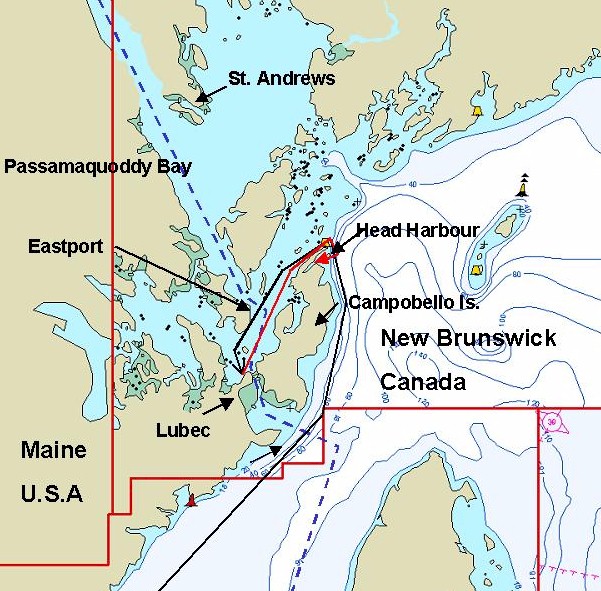
Anju's route (in black) through Canadian Waters to return to the USA, in order to officially leave for Canada!
Our brief journey through Canada went pretty much unnoticed, with the exception of a large fin whale which decided to surface right ahead of us, to check us out. We hadn't realised it beforehand but the mouth of Passamaquoddy Bay is the summer home of a large number of whales of several different breeds as well as a thriving whale-watching industry.
Next morning all we had to do was to contact Canadian border control to check in to their country, which we felt should be easy, as we were within sight of their office when we called. However, we were told that the official port of entry was at Head Harbour, 8 miles back in the direction we'd come the previous day. We were assured by the Coastguard, with whom we talked on the VHF radio, that they'd informed the Customs, who would be awaiting us on our arrival at the harbour.
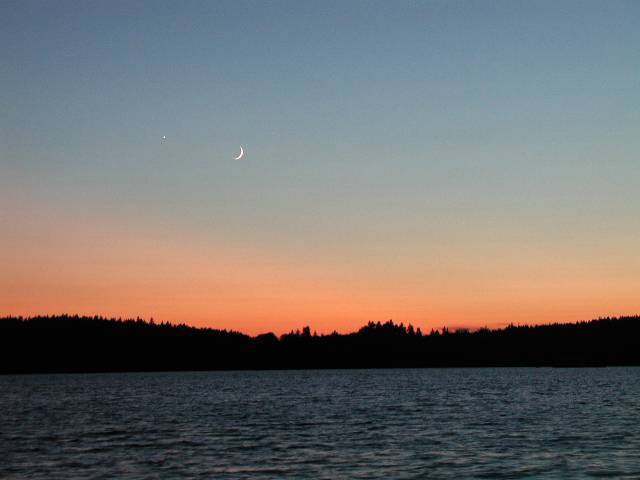
Watching the sun go down in Lubec, USA, even though officially we weren't there any more!
Head Harbour was definitely a working fishing port and we tied up alongside a large, ripe-smelling fishing boat to await the arrival of the officials. We waited and we waited. Finally worried that the authorities weren't actually aware of our presence, the Captain decided he'd better venture ashore to try and find a phone to call again. Unfortunately, despite being the official port of entry, where you have to make landfall and telephone the authorities, nobody had thought that it may be handy to place a payphone anywhere near the wharf, the nearest being about two miles away. Luckily the friendly staff at the office of a whale-watching tour company kindly allowed us to make our call from there, saving us the two mile walk through a country in which, officially, we hadn't yet arrived.
Our fears were confirmed, the message hadn't got through and within half and hour of our call, two extremely tall customs officials squeezed themselves aboard Anju to stamp our passports and count up the quantity of alcohol aboard. Once this was done, we were free to wander Canada as we pleased.
We cycled back to the island's lighthouse accessible on foot at low tide is accessibly on foot via a precarious assortment of ladders and a scramble over the rocks, which are normally submerged at high tide. Unfortunately as it was now close to high tide we were unable to experience this adventure for ourselves but weren't too disappointed, having already sailed past the lighthouse three times in the previous 24 hours! Instead we joined the crowds gathered on the cliffs to watch the whales swimming by below.
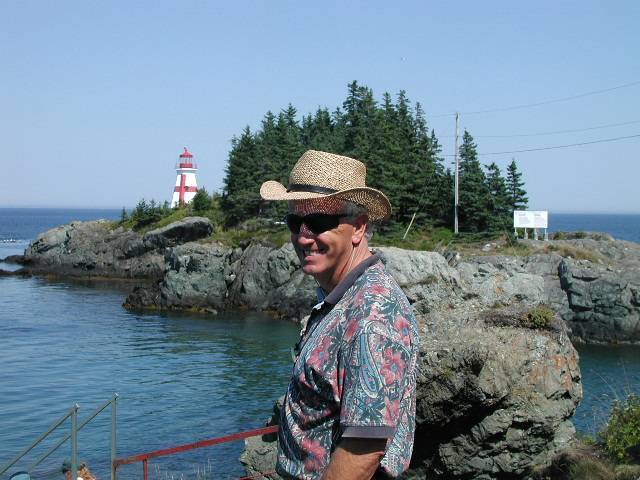
Head Harbour Lighthouse - "Guess what, we'll be sailing past it for a fourth time tomorrow!
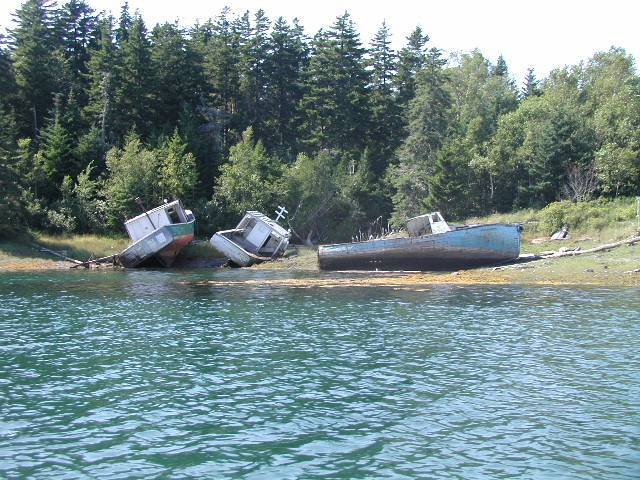
Signs of Head Harbour's more prosperous past
Exhausted, we made our way back to the harbour and poked around in the dinghy to explore the ruins of an old cannery factory, lots of old fishing boats lying neglected and wrecked, as well as the many moored rafts in the harbour still in use by the fishermen and a salmon farm. We learned that salmon farming had been big business until the stock was infected by disease, leaving only a couple of salmon pens still in existence. The other fish pens we'd seen were called weirs and used to catch passing schools of herring, which were harvested mostly as bait for the lobster fishing industry. It was fascinating to be in a working fishing harbour for a change rather than one catering specifically to recreational vessels.
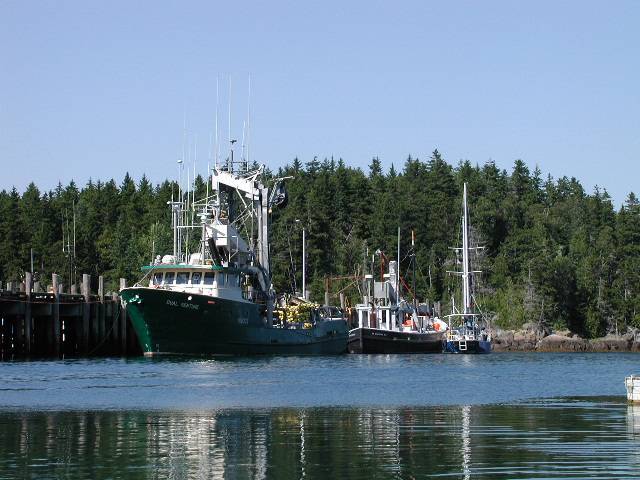
Anju snuggling amongst the fishing boats, Dual Venture in the foreground.
We headed out of the harbour in thick fog to make for the more touristy town of St. Andrews higher up the bay. We were certainly glad we had both radar and our excellent chart plotter to help us find our way.
After passing Head Harbour Lighthouse for a fourth time, we headed around Deer Island and experienced "the world's largest whirlpool", known locally as the Old Sow. As the tide floods around the islands and becomes confused a huge whirlpool results. Anju swerved violently to port and starboard as we tried to head in a straight line, the nearest thing she'd ever experienced to a fun-fair ride! Even in the thick fog, whale-watchers were out in force and we spotted a couple more whales ourselves.
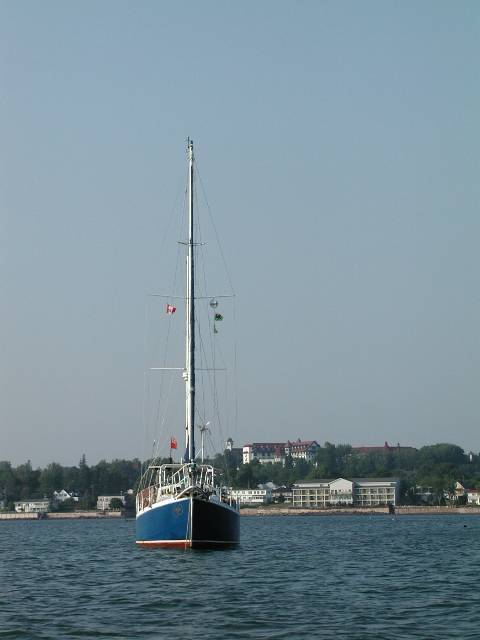
Anju anchored in St. Andrews
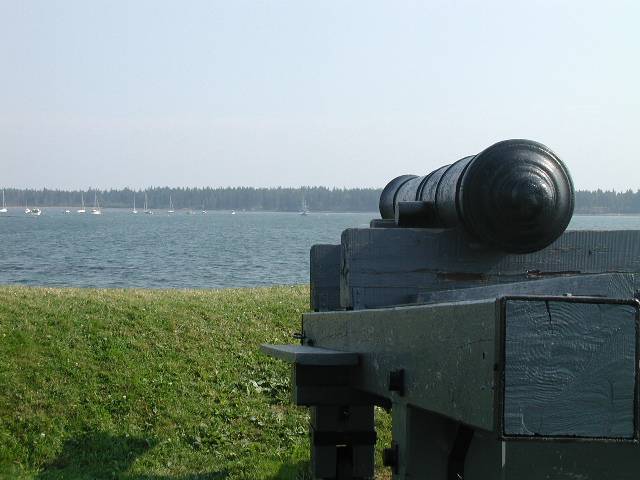
Why are the cannons always aimed at our boat?
Despite being a small town, St. Andrews offered every facility we needed, wireless internet we could access from our boat, a spotless laundry, a large supermarket, free dinghy dock and many welcoming faces, not to mention excellent beach-combing for beach glass and the added luxury of a video shop!
Ironically before we left Canada we spotted our first bald eagle, the national bird of the United States!
Christine's birthday began with us making our way to Eastport, back in the USA and docking there to clear in with Border Control. Our arrival coincided with the arrival of the Deer Island ferry, which the officers had to attend to first but by the time we returned to their office to complete our formalities, all our paperwork was finished and Christine was greeted with a hearty "Happy Birthday". We were officially back in the States. Of course now we had to leave to pass through Canada again. In fact we decided to spend the night back at Head Harbour in Canada, to make an early start the next day. We felt we probably wouldn't really be doing anything wrong, as officially we were now in both Canada and the USA at the same time.
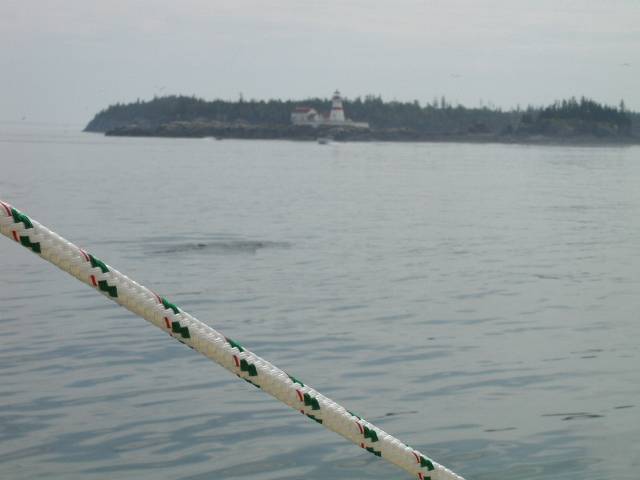
10 points for spotting the whale! Passing Head Harbour Lighthouse for the fifth time.
This time we rafted alongside an even bigger fishing boat, Dual Venture, in Head Harbour. We felt it was always best for steel vessels to raft together. Again we checked with locals that the boat wasn't heading out early next morning and although they reassured us, we were skeptical after our previous experience. This time, however, it wouldn't really matter as we wanted to make an early start ourselves. Sure enough a few minutes later, one of the boat's crew, Richard, came by to warn us they'd be heading out at 7 am the next morning. Of course psychologically we'd already changed back to USA time now which would make this 6 am for us. Bizarrely, despite their closeness, the two countries were in different time zones! Still it would mean we'd catch the tide right to surf along at a good speed between Grand Manan Island and the US mainland.
Richard returned to his boat later to give some friends a tour and kindly allowed us to tag along. Dual Venture was actually a sister ship to the Andrea Gail, lost in "The Perfect Storm", although Dual Venture was rigged differently for Purse Seine fishing for herring. It was fascinating to actually get aboard one of the fishing boats when we've seen so many at sea. We toured the engine room, the galley and crew living areas and finally the bridge, where our resident fisherman was impressed by Dual Venture's fish finder, which could find a school of fish at 5 mile range. We too could have one for only half a million Canadian dollars!
Before our tour finished he asked if we wanted to see the lighthouse. Why not!
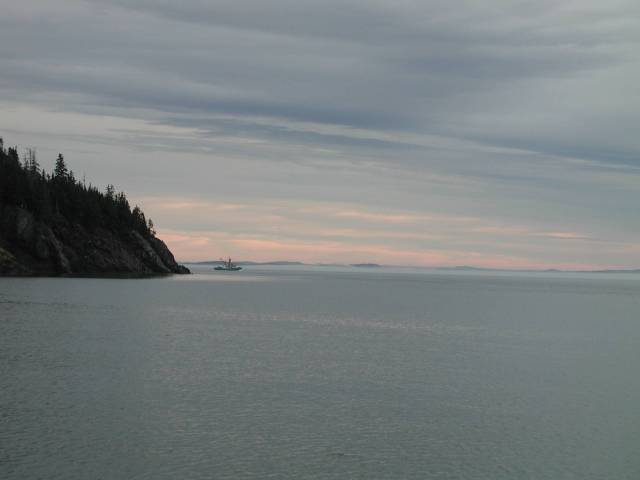
Dual Venture heading out to sea